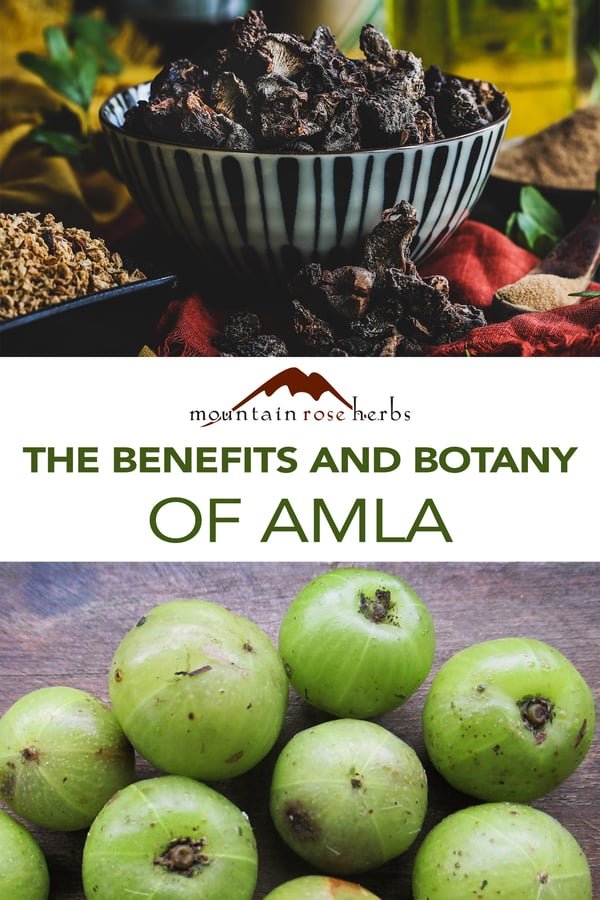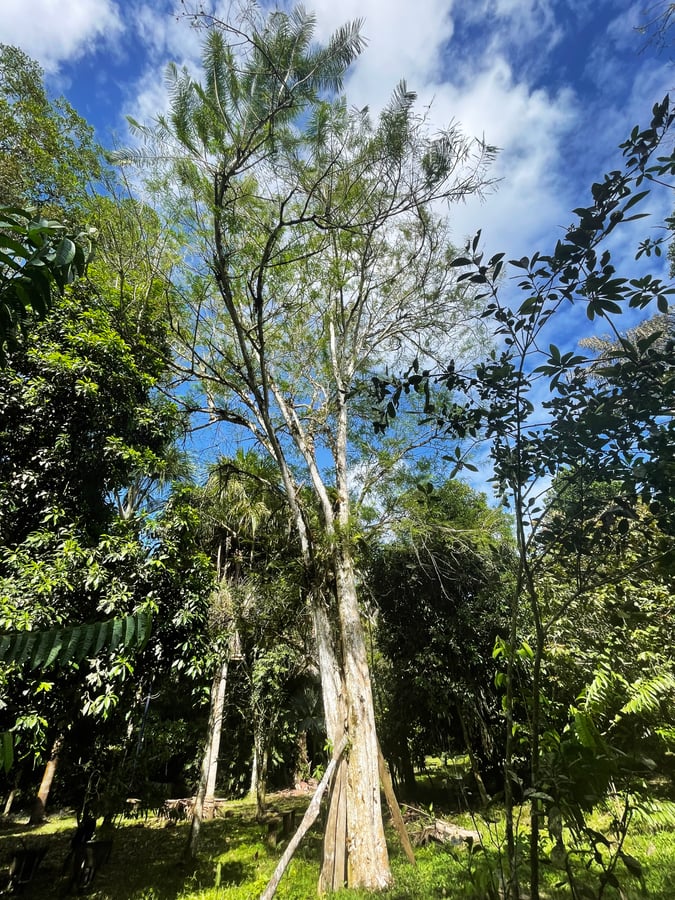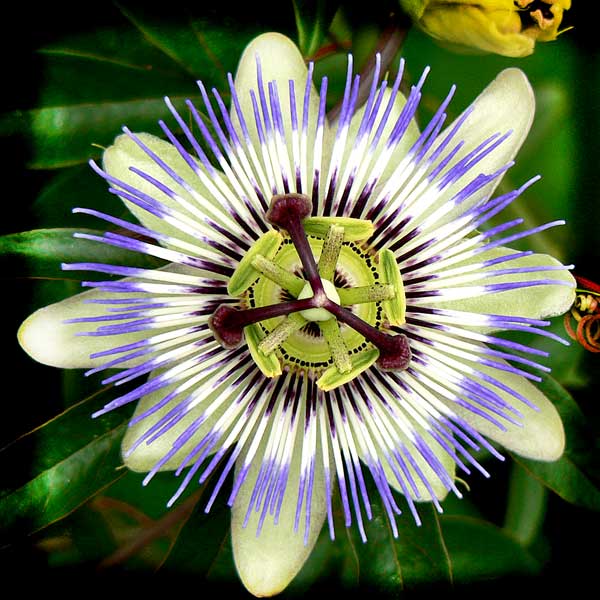I would like to introduce a lovely tree that many people reading this may not have had the opportunity to see in real life. It is one whose medicine is often referenced and shared among herbalists of all levels. Many know this tree and its fruit from its role in some of the most beloved herbal formulas hailing from the Indian sub-continent and the traditional medicine cultural heritage known as Ayurveda.
The Amla tree, Phyllanthus emblica is a large member of the Euphorbiaceae family, a common plant family found throughout the tropics and subtropics, as well as arid regions of the world. Native to Sri Lanka, South East Asia, Southern China, and Indonesia, and grown in collectors’ gardens in Costa Rica, we find this tree in many herbal traditions such as Ayurveda, Unani-Tibb, Siddha, Traditional Chinese Medicine (TCM), various folk traditions, and in modern planetary eclectic herbalism. The amla berry is particularly well-loved and incorporated in the triphala formula, as well as being a key ingredient in Chayavanprash. I have had the great opportunity to live with and harvest these interesting fruits and was tickled to discover that Amla trees grew on the farm I lived at and directed for many years on the southern Caribbean coast of Costa Rica.
Amla is found below 3,000 feet, thriving in well-drained soils. It is tolerant to drought, but sensitive to flooding and frost. While quite tall, growing up to 60 feet, this tree has an unimposing feeling as the leaves are light and feathery, allowing the sun to filter into the understory. Being deciduous and an abundant producer, the Amla tree is found in the open sun, along roadsides, in backyards, and urban forests. Amla is easily cultivated from cuttings, as a graft, and from seed. It contains male and female flowers, which are pollinated by wind and insects, and lives for about 15 years. I know it as a canopy-level tree in a mature food forest, where it is often planted as a living fence. It is an important tree for farmers who focus on integrated polyculture systems and there are numerous varieties that ensure year-round production and adaptability to various soil conditions. This diversity of varietal options allows for farmers to cultivate it among other production and subsistence crops.
Amla is commonly found on store shelves powdered, tinctured, extracted in oil, pickled, candied, and even made into jams. Many people think Amla has a strange flavor and texture. The berries are light green, very hard, and the size of a round date. When you bite into one, it’s almost hard to grab with your teeth; using your front teeth, you can get only small bites. The smooth surface and firm flesh remind me of wax. For those of you who have studied herbal energetics, you will immediately taste a complex intensity of flavor. Sour, bitter, astringent, and slightly aromatic. While I no longer make the “bitter face” of the beginner herbalist, this bitterness automatically makes me feel like I want to spit. The bitter is tolerable, akin to the bitter of citrus skin, but with an aroma unlike any other. The sour aspect is also the kind that automatically draws saliva: not the kind that makes you pucker but makes you feel the saliva filling in along your side tongue and cheeks, and an almost sweet sensation enters. I loved the first moment I tasted fresh amla. It reminded me of a tropical schisandra; the flavor was so unique. That flavor profile told the whole story of this special fruit. With the rich sour, I automatically felt the effect on tissue. This tasted more like a tonic than medicine. Interestingly, in the Ayurvedic materia medica, Amla is considered one of the most tonifying and inflammation-fighting plants.
Amla contains four of the seven B vitamins, as well as fat-soluble vitamins E and A, and the fruit is also high in Vitamin C. Vitamin C is important in the maintenance and production of collagen, the most abundant protein in the mammalian body. This is the substance that makes up the fibers of the body, specifically epithelial cells, that are found in skin, connective tissue, and mucus membranes. Vitamin C also stimulates the production of B & T immune cells in both innate and adaptive immunity. Unlike the majority of fruits and veggies in which vitamins are lost in the cooking process, the vitamins in alma survive heat and dehydration. Additionally, as is typical for most vitamin C-containing plants, the vitamin C in amla fruit is joined by bioflavonoids, specifically the powerful quercetin, polyphenols, tannins, and gallic acid. It is also high in polyunsaturated fats, omega-3 and omega-6 fatty acids, minerals calcium, iron, potassium, and phosphorus. The polyphenol count is higher than your typical grocery fruits, which puts Amla in that coveted superfood status.
As a superfood, or more ethnobotanically appropriate, a Rasayana in Ayurvedic Medicine (a modern commercial therapeutic category akin to a TCM longevity tonic), rejuvenating and healing amla is worked with externally as an oil extract or even cold-pressed to massage into the hair and skin. Rasayana therapy is ongoing, like all adaptogens, to support the graceful aging of the body and mind, lessening the impact of stress and damage on the systems, and helping to maintain health.
You can easily make your own amla oil by soaking the dried powdered herb in a carrier oil of choice. My preference would be grapeseed or jojoba for skincare, and a slow and low heat process for extraction in a warm water bath, a double boiler, or a sunny window. Massaged into hair, amla is touted to nourish the scalp and support healthy, youthful hair.
Like many of our ancient herbs, alma comes with stories of divine alignment. Amla is considered the Tree of Lakshmi and Vishnu. Lakshmi is a Hindu Goddess of abundance, prosperity, and beauty. Her consort Vishnu is the divinity of goodness and compassion and the protector of creation. Annually in mid-March, Hindus celebrate Amalaki Ekadashi, the day of the year when the Lord Vishnu resides in the amla tree. Devotees wake up early in the morning, bathe, and go to worship Lord Vishnu at the sacred tree, bringing offerings of sesame seeds, coins, water, sandalwood, roli & chawal, flowers, incense, and offer food to a Brahmin. Devotees observe a strict fast on this day, only eating food made from amla.
With all this information, you may be asking yourself how to incorporate amla into your daily routine. Try exploring this beautiful plant ally in your smoothie, in your self-care routine as an infused oil, and as a nutritious marmalade!
Want to learn more from Sarah Wu?
Find Her at VillageWitch.org
You may also enjoy
Ayurvedic Cooling Drink Recipe with Amla
What is Triphala and How to Take It
7 Ayurvedic Herbs for Health and Vitality
Zero-Waste Shampoo Powder Recipe with Amla & Shikakai

*These statements have not been evaluated by the Food and Drug Administration. These products are not intended to diagnose, treat, cure, or prevent any disease. We recommend that you consult with a qualified healthcare practitioner before using herbal products, particularly if you are pregnant, nursing, or on any medications. For educational purposes only.












